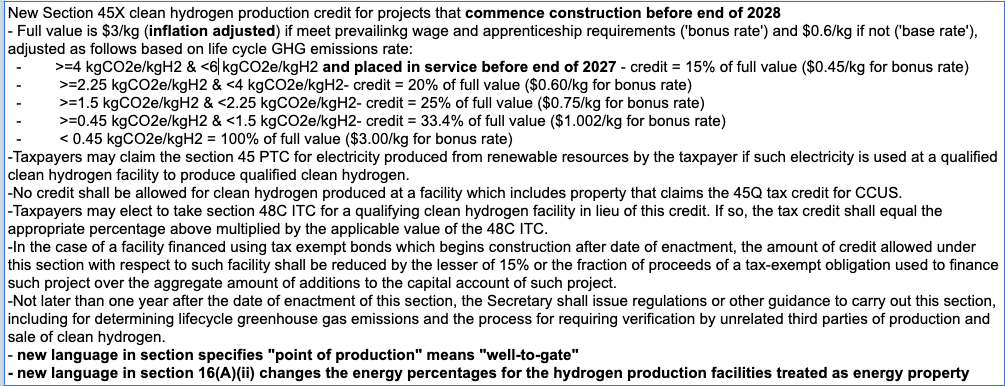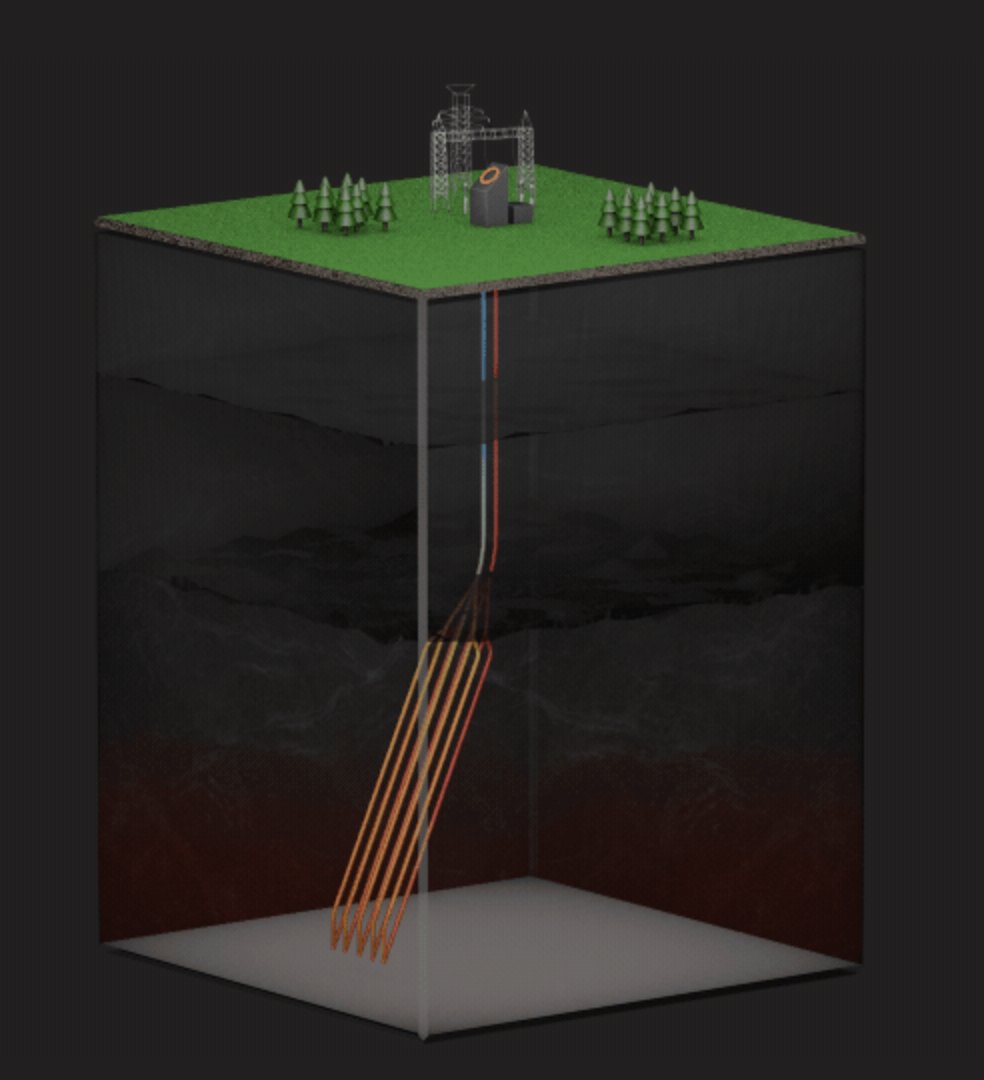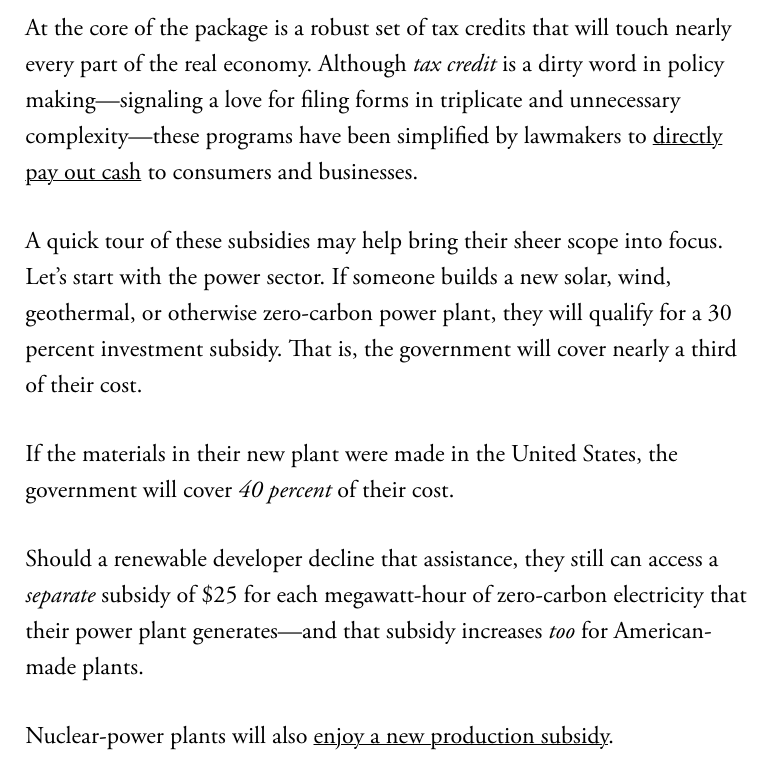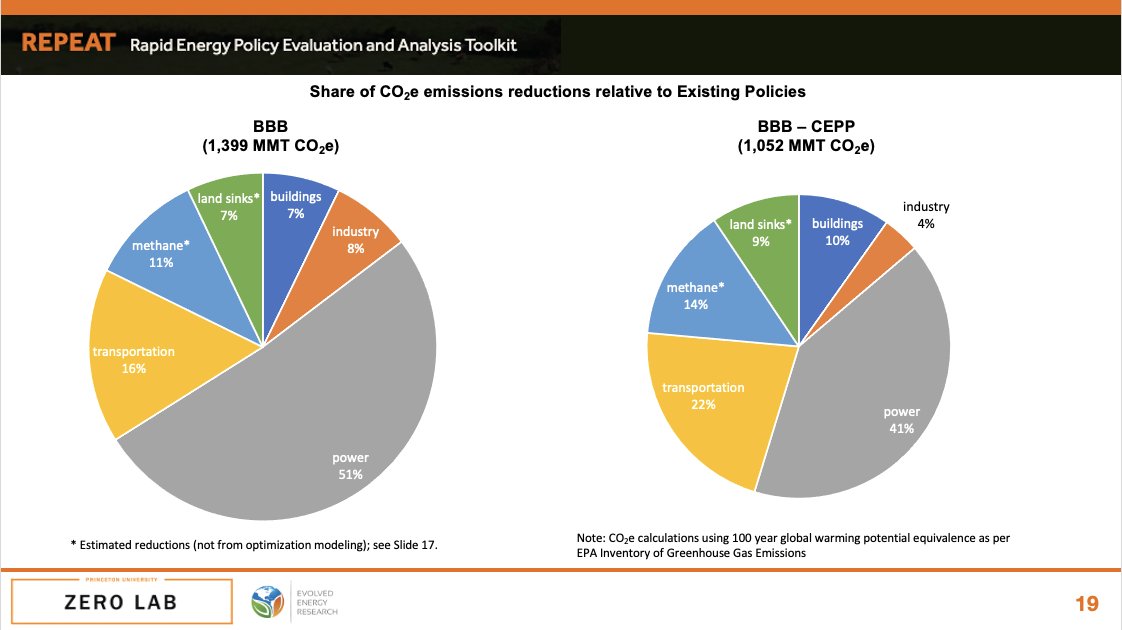
As the House moves towards a vote on #BuildBackBetter today, @Princeton REPEAT Project, w/help from @EnergyInnovLLC, has finished a thorough review of entire "BBB 2.0" & logged all #ClimateAction/#CleanEnergy provisions (w/changes from the $3.5t BBB 1.0): bit.ly/REPEAT-Policies
Caveat emptor: Any errors in interpretation or reading of the legislative text are our own.
Here's a run-down of some key changes as the bill has evolved from "BBB 1.0" -- the $3.5 trillion dollar package introduced in Sept. which we modeled previously at repeatproject.org -- to this $1.85 trillion version moving towards a vote potentially later today... 🧵
Title I: Agriculture.
There's less ~$7b LESS for forest restoration & resilience (Sec 11002) but $31 billion MORE for new programs on agricultural conservation + related technical assistance, measurement & verification related to soil carbon sequestration (Secs 15002-15003).
There's less ~$7b LESS for forest restoration & resilience (Sec 11002) but $31 billion MORE for new programs on agricultural conservation + related technical assistance, measurement & verification related to soil carbon sequestration (Secs 15002-15003).
There's also $3.88b MORE for loans and forgiveable loans to rural utilities to procure renewable energy and energy storage to support renewable energy deployment (Sec 12003, new in this version of the bill).
Title II: Education and Labor title
$12.26b MORE (Secs 26001 & 26002) for workforce development incl national service (e.g. AmeriCorp) & job training/apprenticeships (YouthBuild, JobCorps) related to climate resilience & mitigation.
Is this Citizens Climate Corps in practice?
$12.26b MORE (Secs 26001 & 26002) for workforce development incl national service (e.g. AmeriCorp) & job training/apprenticeships (YouthBuild, JobCorps) related to climate resilience & mitigation.
Is this Citizens Climate Corps in practice?
Title III: Energy and Commerce (this is one of the biggest #ClimateAction titles)...
1. $2b MORE for the GHG Reduction Fund, a sort of 'green bank' to support state, local, non-profit financing entities undewrite deployment of low/zero emissions tech (Sec 30103).
1. $2b MORE for the GHG Reduction Fund, a sort of 'green bank' to support state, local, non-profit financing entities undewrite deployment of low/zero emissions tech (Sec 30103).
2. $140m LESS for programs to reduce diesel emissions from trucking supply chains (30105)
3. $33m LESS for air quality and GHG emissions monitoring programs by states (30106)
4. $40m MORE for programs to reduce air pollution at schools in low-income areas (30107)
3. $33m LESS for air quality and GHG emissions monitoring programs by states (30106)
4. $40m MORE for programs to reduce air pollution at schools in low-income areas (30107)
5. $13m LESS for a EPA low-emissions electricity program to provide education & assistance for low-income and disadvantaged communities to adopt clean electricity. (Sec 30108).
6. $700m MORE for grants, rebates, loans to reduce methane emissions in oil & gas supply chain (30114)
6. $700m MORE for grants, rebates, loans to reduce methane emissions in oil & gas supply chain (30114)
6b. Sec 30114 is also the methane fee for upstream emissions of methane from oil & gas. The fee structure is modified to start lower at $900/tonne CH4 and rise to $1500/tonne by 2025 (same level as prior version). (That's about $60/tCO2e using EPA's standard methane GWP of 25.)
7. NEW: $5b MORE for EPA "Climate Pollution Reduction" program: provides $250m to at least one entity in each state for developing plans to reduce GHGs plus $4.75b to implement GHG reduction plans (Sec 30116).
8. NEW: $20m MORE to help speed up EPA permitting & reviews (30117)
8. NEW: $20m MORE to help speed up EPA permitting & reviews (30117)
8. NEW: $100m for EPA to develop a low-embodied carbon labeling program for construction materials and transportation products (to facilitate 'buy clean' procurement by govt and others; Sec 30118).
9. $2b LESS for Environmental and Climate Justice Block Grants program (now $3b in funding, Sec 30202).
10. The BIG one: the Clean Electricity Performance Program is removed entirely. RIP CEPP. This is a ~350 million metric ton hit according to repeatproject.org modeling.
(Full disclosure: I helped advise Congressional offices on the design of CEPP).
(Full disclosure: I helped advise Congressional offices on the design of CEPP).
11. $3.25b LESS for Home energy performance-based, whole house rebates and training grants for building efficiency programs (Sec 30411)
12. $2.25b LESS for High-efficiency electric home rebate program (Sec 30412).
12. $2.25b LESS for High-efficiency electric home rebate program (Sec 30412).
13. $3.5b of Weatherization Assistance program funding is removed entirely.
I think that is because the Infrastructure Bill also includes $3.5b for weatherization program so considered duplicative?
I think that is because the Infrastructure Bill also includes $3.5b for weatherization program so considered duplicative?
14. $2.75b LESS for "Critical facility modernization program" (now only $0.5b), which provides grants to states for resiliency, efficiency and clean energy at public and non-profit buildings (e.g. police/fire, hospitals). (Sec 30421)
15. $12.5b LESS for DOE grants and financial assistance to states for zero-emissions vehicle infrastructure (Sec 30431), EV charging access for low-income customers (removed entirely), state energy plan development (removed), and state transportation plan development (removed).
16. $10b MORE in loan authority for the DOE Loans Program Office (note this is not an expenditure of $10b, scores as much smaller than that since funds are recovered via repayments and credit subsidies).
17. $6b LESS for DOE grant and loans for construction of new high-capacity transmission lines between interconnections. Now $2b in total funding. (Sec 30451).
18. $60m LESS for technical assistance for planning of new organized wholesale markets (30453).
18. $60m LESS for technical assistance for planning of new organized wholesale markets (30453).
19. A combined $100m LESS for DOE and FERC to expendite environmental reviews to speed up permitting of energy facilities (e.g. transmission). Sections 30461-30462.
20. NEW: $4b DOE "Advanced Industrial Facilities Deployment Program" to provide competitive technical assistance for projects to reduce energy/emissions intensity in industrial and manufacturing facilities. sec 30471.
21. $22.5b LESS for Federal Energy Efficiency Fund and Energy Efficiency & Conservation block grants, which are both struck entirely from bill (former Sections 30481-30482). There are similar funds in Infrastructure bill, but much smaller.
22. But heh, EIA gets $40m more... 🤨
22. But heh, EIA gets $40m more... 🤨
OK that finishes off Energy & Commerce title. Like I said, it's one of the major #ClimateAction titles, and probably the one with the biggest hits to funding in BBB 2.0. Most likely reflects objections from Sen. Manchin who chairs corresponding Senate Energy Committee.
Going to take a break for lunch now and will recommence with Title IV, Financial Services in a bit...
Reminder that you can check these changes and details on each program out in our public Google spreadsheet here at bit.ly/REPEAT-Policies
Reminder that you can check these changes and details on each program out in our public Google spreadsheet here at bit.ly/REPEAT-Policies
OK, let's wrap this up... vote looks like it is getting close (
Title IV, Financial Services:
Sec 40001 has $65B for new public housing, ($15b LESS) which are supposed to in part "advance improvements to energy & water efficiency or climate resilience"
https://twitter.com/JesseJenkins/status/1456684114518568962).
Title IV, Financial Services:
Sec 40001 has $65B for new public housing, ($15b LESS) which are supposed to in part "advance improvements to energy & water efficiency or climate resilience"
Sec 40006 has $4b LESS for loans, direct loans and grants to fund projects that improve energy or water efficiency, sustainability and climate resilience in affordable housing (now $2b in funding).
I'm going to skip Title VII, Natural Resources, which I did not review in the prior bill, so I can't track changes, but there's a lot of programs here focused on conservation, wildfire management, and climate resilience & adaptation. Check out programs at bit.ly/REPEAT-Policies
Title VIII, Oversight and Reform. This is where federal procurement and management of federal buildings and fleets is tucked away...
1. $2b LESS for electrification of the General Service Administration's federal vehicle fleet (~$3b remains, Section 80001)
1. $2b LESS for electrification of the General Service Administration's federal vehicle fleet (~$3b remains, Section 80001)
2. On the other hand: $3.58b MORE for the U.S. Postal Service to procure electric delivery vehicles and associated charging infrastructure (~$6b total; Sec 80002).
3. NEW: $975m for GSA environmental sustainability programs, to procure sustainable building materials etc. (80003).
3. NEW: $975m for GSA environmental sustainability programs, to procure sustainable building materials etc. (80003).
4. NEW: $3.25b for GSA for the purchase of goods, services, and systems to improve energy efficiency, promote purchase of low-carbon materials, and reduce the carbon footprint (80004).
Federal procurement FTW.
Federal procurement FTW.
5. Sorry DC: you lose $10m for DC govt vehicle electrification (former section 80008). #TaxationWithoutRepresntation #DCStatehood
Title IX is Science, Technology & Space, which has a lot of R&D $ in it. I didn't review this previously either because we don't explicitly model these, but worth noting there's $1b for DOE's demonstration office in here + a lot for climate science & climate resilience research.
Title XI: Transportation and Infrastructure
(Im skipping Title X, Small Biz, as I didnt see any climate/energy specific stuff there)
1. $700m LESS for DOT research & investment on low-emissions aviation fuels (Sec110007)
2. REMOVED: $150m for credit enhancement for rail carriers
(Im skipping Title X, Small Biz, as I didnt see any climate/energy specific stuff there)
1. $700m LESS for DOT research & investment on low-emissions aviation fuels (Sec110007)
2. REMOVED: $150m for credit enhancement for rail carriers
3. $400m MORE for General Services Administration to convert federal office buildings to "high performance green buildings" (Sec 110010).
4. LESS funding for climate resilience measuers for the U.S. Coast Guard and ports (110011 and 110013)
4. LESS funding for climate resilience measuers for the U.S. Coast Guard and ports (110011 and 110013)
5. REMOVED: $100m for Maritime Administration to provide environmental and technical assistance program to reduce carbon emissions, reduce vessel noise pollution, and improve the climate resiliency of the marine shipping and the maritime industry.
Skipping Title XII, Veterans Affairs brings us to (drumroll please)....
Title XIII, Ways & Means, the ❤️ of the #ClimateAction programs (sorry had to save the good stuff for the end, build suspense, keep you on edge of your seat... who I am kidding y'all are asleep out there).
Title XIII, Ways & Means, the ❤️ of the #ClimateAction programs (sorry had to save the good stuff for the end, build suspense, keep you on edge of your seat... who I am kidding y'all are asleep out there).
1. Important change: Production Tax Credit (PTC) & Investment Tax Credit (ITC) for renewable electricity now END in 2026 but are replaced by NEW technology neutral credits of equal value for all zero-carbon electricity sources for projects commencing construction in 2027 onwards.
An exception: the ITC for geothermal and waste heat recovery now continues through commence construction before end of 2033 (with phase down in value for projects that complete after 2031). These can emit CO2 (geothermal flash can) & so dont qualify for the new ITC/PTC.
Also: NEW credits do NOT end in 2031. They START to phase down after 2031 OR whenever US electricity sector cuts CO2 75% below 2021 levels, whichever happens later. for projects starting construction the year after, credit is 100%, then drops to 75%, 50% and 0% over years 2-4.
All that provides more policy certainty and longevity for the tax credits than before and ties their phase-out to an emissions outcome, which is great.
Also: NEW 10% PTC / 10 percentage pt. ITC bonus for projects built in "energy communities" defined as census tracts (or their neighbors) where coal mine has closed since end of 1999 or coal plant has closed since end of 2009. Big incentive to drive investment in energy transition
All these changes represents compromise between House Ways & Means and Senator Wyden's Clean Energy For America Act, which introduced these tech neutral credits.
See Sec 136101 + 136102 for old tech specific PTC and ITC and Sec 136801 + 136802 for new clean electricity PTC/ITC.
See Sec 136101 + 136102 for old tech specific PTC and ITC and Sec 136801 + 136802 for new clean electricity PTC/ITC.
2. There is a similar shift in incentives for clean fuels, which shift from a set of fuel specific subisidies that now expire in 2026 (see Sec 136201-136203) to a new tech-neutral low-carbon fuels credit (Sec 136805).
The new low-carbon fuels credit is $1/gal for road fuels and $1.75/gal for aviation fuels if they have zero lifecycle greenhouse gas emissions from "well-to-wheels."
Fuels with >0 but <25 kg CO2-equivalent well-to-wheels emissions (as determined by Argonne Lab's GREET model, shout-out for modelers) get a smaller credit, proportionate to full value times the ratio of (50-X)/50 where X is their emissions intensity. e.g. 25 kgCO2 = 50% value.
Finally, like the new clean electricity credit, this new low-carbon fuels credit phases out over 3 years after 2031 OR whenever transportation emissions fall 75% from 2021 levels, whichever comes later.
I consider both of these 'Wyden-style' shifts to be great changes. 👏
I consider both of these 'Wyden-style' shifts to be great changes. 👏
Let's see, what else changed...
3. 45Q tax credit for carbon capture, use and storage get's big increase to $85/t for CO2 that's geologically stored and $60/t for CO2 that's used in an industrial process/product.
3. 45Q tax credit for carbon capture, use and storage get's big increase to $85/t for CO2 that's geologically stored and $60/t for CO2 that's used in an industrial process/product.
Power plants need to capture 75% of emissions across the whole facility to qualify (so if there's a multi-generator plant, as is common for coal plants, they either all have to capture 75+% or the rest have to retire).
Industry and fuels production has no facility-level threshold because they've got tons of smaller point sources usually, making that impractical.
See Sec 136106 for details.
See Sec 136106 for details.
4. The PTC for existing nuclear plants (Sec 136108) now runs to 2027 (1 yr later than prior BBB but 2 yrs less than draft shared last Friday).
The formula for reducing credit as generators earn more is also more gradual = $15/MWh less 16 cents per $ earned above $25/MWh.
The formula for reducing credit as generators earn more is also more gradual = $15/MWh less 16 cents per $ earned above $25/MWh.
5. The new hydrogen tax credit (Sec 136204) underwent some changes too...
"Green" hydrogen with < 0.45 kg CO2-e emissions per kg H2still gets $3/kg (aside: why we'd set a PTC at flat rate for 8 years for tech like electrolysis expected to rapidly fall in cost is a bit baffling!)
"Green" hydrogen with < 0.45 kg CO2-e emissions per kg H2still gets $3/kg (aside: why we'd set a PTC at flat rate for 8 years for tech like electrolysis expected to rapidly fall in cost is a bit baffling!)
The tiers for "Blue" hydrogen from methane reforming of natural gas w/CCS are adjusted. They now spell out emissions intensity thresholds in kg CO2-equivalent per kg hydrogen produced. Here's the details below. Credit is genearlly $0.6-$1/kg H2 depending on emissions intensity 

6. There are TWO NEW tax credits for advanced manufacturing facilities intended to help expand supply chains in the US for (a) semiconductors (key ingredient in EVs among many other things) and (b) solar and wind components).
6a. The NEW Advanced Manufacturing Investment Credit (Sec 136503) offers 25% for manufacturing of semiconductors and semiconductor tooling equipment, that commences construction before end of 2025.
Y'all: the chip shortage is real.
Y'all: the chip shortage is real.
6b. NEW Advanced Manufacturing Production Tax Credit (Sec 136504) provides varying $/watt for US built solar PV or wind turbine components (e.g. PV wafers, cells, panels, turbine baldes, nacelles, towers, offshore mounts). Details below. BIG boost to US clean energy manufacturing 

Note there's also 48C 30% investment tax credit for advanced energy manufacturing, with $5b in credits available per year from 2022-2023 and $1.875b for each year 2024-2031 ($25b total), with slices of this $ reserved for facilities in auto & coal communities. (Sec 136501)
Aside: What are the costs and benefits of greater U.S. manufacturing of wind and solar PV components? Glad you asked: our new paper in Environmental Research Letters has you covered iopscience.iop.org/article/10.108…
OK. I think that takes us to the end of the changes from Build Back Better 1.0 to 2.0. It's been a journey. There's a lot MORE provisions unchanged in here, and you can look at each program, section by section at bit.ly/REPEAT-Policies
We'll see if they get the bill out of the House today or not. In any case, the REPEAT Project team is working hard right now (as I tweet away) prepping our modeling of this bill's impact on energy, climate, employment, and pollution. Stay tuned next week: repeatproject.org!
Doh! I forgot a major program right at the beginning in the Ag Title:
NEW, Soil Conservation Assistance program (Sec 15001) which pays $25/acre to producers who establish cover crops for soil health & to help address climate change. Could be big boost to land carbon sinks.
NEW, Soil Conservation Assistance program (Sec 15001) which pays $25/acre to producers who establish cover crops for soil health & to help address climate change. Could be big boost to land carbon sinks.
@threadreaderapp unroll please
• • •
Missing some Tweet in this thread? You can try to
force a refresh










